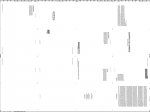Thank you for your answer. One question: suppose you're running 4 color job KCMY order, large format (960x1300).Almost all of the water reaching the paper (with the exception of presses equipped with brush, spray, or centrifugal dampeners that expose the substrate to a lot of mist) is contained in the ink making up the image area. The image area will be anywhere from three to fifteen percent water (depending on what expert you believe) but the amount of water reaching the non-printed area of the paper is negligible. The transfer of water through the press can best be described as one wet surface presenting water to another surface, one that will accept or reject water based on the receiving surfaces 'surface energy'. The blanket is not a particularly water receptive surface, so the water presented to it on the background area of the plate is just left there by the blanket.

That is quite debatable. First is quality guy – did he ever worked as a pressman? Theoretical advantages can be like a holy grail especially if you're good at talkin'.As for the running of IPA, almost any printer in the US could run as much alcohol as they like (in some states this might involve giving up solvents for cleaning the press) and in this hyper competitive market if there was any advantage to running IPA, everyone would be forced to use it in order to compete. This, of course, has not happened. I listened to one pressman complain to me about alcohol replacement fountain solution until his quality guy walked up and refuted every claim the poor guy had made. It seemed that by every measurable parameter, quality and productivity were better without IPA than with.
That's mean that you're right the person i was looking to talk to 'cause i've got one question still without answer (maybe because i don't have proper chemical edicution)Any theoretical discussion of litho technology (especially fountain solution and alcohol) always causes people on this forum to start expressing their opinions and observations and I think this is the best thing that happens here. I have been formulating and selling alcohol replacement fountain solutions for a long time and have done many thousands of hours of experimentation (almost all of it done on press, in pressrooms, running commercial work), but still do not present my ideas as undisputed facts as my fellow forum goers are sometimes fond of doing.
PS what is "Carboning"
Yesterday a techspec from poland come to our place to explain some of my questions about ink/fountain situation and behavior.The image area will be anywhere from three to fifteen percent water (depending on what expert you believe)
|
A 30-day Fix for Managed Chaos
As any print professional knows, printing can be managed chaos. Software that solves multiple problems and provides measurable and monetizable value has a direct impact on the bottom-line. “We reduced order entry costs by about 40%.” Significant savings in a shop that turns about 500 jobs a month. Learn how……. |


